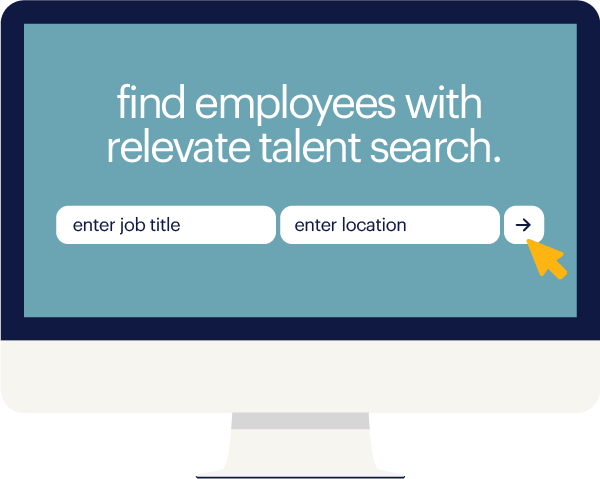Empowered and connected by digital technology, teams today are able to collaborate on projects and deliver on strategic goals from anywhere and at almost any time. But this flexibility — and the technology that enables it — is creating new challenges alongside new opportunities for organizations today, as Randstad's recent survey revealed.
How, exactly?
-
Greater flexibility is a defining characteristic of the modern workplace, but "flexibility" itself may mean different things to employers and employees. Worse, what employers are offering, and what employees really want, may not match up.
-
The challenge for companies today is to harness flexibility in a way that both appeals to talent and delivers on business goals. Without proper controls and guidelines in place, the very technology that makes flexibility possible can lead to a host of negative outcomes.
Let's dig into these findings a bit more to see how workplace flexibility, powered by the latest tech, is impacting companies today — and what strategic organizations can do to leverage it for maximum advantage.
workplace flexibility is an important talent lever

Unemployment in the U.S. continues to hover around historic lows, which means competition for skilled workers is more intense than ever. Yet, for many companies, talent acquisition is only half the battle. They're also experiencing high rates of turnover, with top performers frequently jumping ship to pursue opportunities elsewhere.
The good news is that the forces driving your most valuable employees to leave also offer clues to critical levers you can use to move the needle on talent acquisition. It may be possible, in other words, to simultaneously make headway on both talent acquisition and retention in one fell swoop. And no lever is more impactful than workplace flexibility.
Indeed, Randstad's research found that workplace flexibility is a tremendously powerful tool for attracting and retaining talent. And beyond solving talent woes, offering greater workplace flexibility can generate cost-saving opportunities for companies, too.

-
A full 68 percent of employees would rather have greater workplace flexibility than pay increases.
-
Another 62 percent of employees would take jobs they don't love if the roles came with greater workplace flexibility.
-
At the same time, 32 percent of employees are currently considering leaving their employers due to lack of workplace flexibility.
So what are companies doing to enable greater flexibility in the workplace? Randstad's research reveals that there may be a misalignment between what companies currently offer and what employees really want.
For example, nearly two-thirds (66%) of workers want to have the option of working remotely at least part of the time — something fewer than a third (29%) of companies offer. Meanwhile, the second-most-common flexibility offering at companies today is greater choice of attire — something that wasn’t even on the radar in our survey of employee preferences around workplace flexibility.
These are good examples of the persistent misalignment between employees and employers when it comes to workplace flexibility, as well as areas where companies should look to improve going forward.
pressure to be always “on”: the downside of greater workplace flexibility
Work/life balance is no longer an either/or. Younger generations, in particular, are accustomed to being productive in nontraditional settings, as well as outside of traditional working hours. In fact, many regard this kind of flexibility as a natural approach to getting work done. And with Gen Z forecasted to comprise 36 percent of the global workforce by next year, companies can't afford to ignore these changing employee behaviors and expectations.
Technologies like video conferencing and chat apps allow today’s workforce to work from virtually anywhere at any time — and that’s proving to be both a blessing and a curse. Notably, for example, the ability to work where and when employees want may also lead to an inability to “turn off” when the workday ends.

For example, Randstad's survey revealed that difficulty disconnecting from work at the end of the day is widespread today: 56 percent of all managers reported being unable to disconnect from work after hours, as did over a third (37%) of employees.
This pressure to be always "on" extends even to vacations. While managers in our survey expressed broad-based support for employees taking time off, over half (53%) said they have some expectation that team members will reply to business messages while out of office. Not surprising, then, that 43 percent of employees said they feel compelled to always, very often or at least sometimes reply to managers’ requests while they’re on vacation. And well over two-thirds (68%) of Gen Z employees at least sometimes respond to work-related messages while on vacation.
When time off isn't really time "off," conditions are ripe for burnout, higher rates of turnover — and any number of other negative talent outcomes.
change starts at the top
To better manage employees' technology use — and to guard against these negative outcomes — clearer communication about policies and expectations is the order of the day. For example, our survey found that while 43 percent of managers’ organizations have established policies about after-hours communications, just 18 percent of employees are aware of them.
That's a critical misalignment, and it needs to be addressed. Leaders should strive to set a positive example and adopt leading toward decompression as a way to help employees disconnect from the daily grind and think strategically about bigger-picture goals.
Managers have an opportunity, moreover, to improve employee morale and engagement by encouraging time away from devices and day-to-day duties to focus on the bigger picture. That starts with leadership embodying the behavior they’re trying to encourage — for example, by stepping away from the screen and making it clear that it’s okay to disconnect after hours.
key takeaways
Flexibility is a defining feature of the modern workplace, and it presents new opportunities, as well as distinctive challenges, for organizations today. Notably, there seems to be a misalignment between the types of flexibility employees really crave and the offerings at most companies currently have on tap. For forward-thinking companies, correcting that misalignment is going to pay dividends, both in terms of talent acquisition and retention down the line.
With greater workplace flexibility, moreover, comes mounting pressure to be always "on” — and that’s creating real threats to businesses today. That’s why companies must effectively manage expectations around technology use, give employees the flexibility to “turn off” outside of work hours and prioritize strategic thinking over immediate action. For more insights on the intersection of tech and talent, check out the full report. And if you're ready to prepare your business to overcome your most pressing talent challenges in 2019 and beyond, discover all of the ways Randstad can help you get there.













